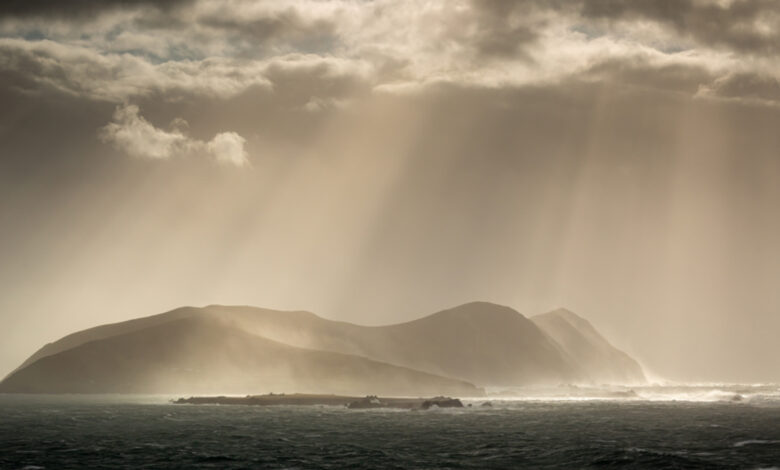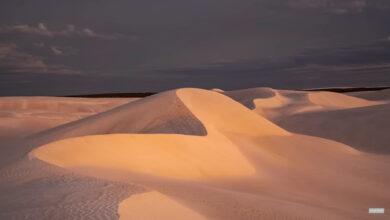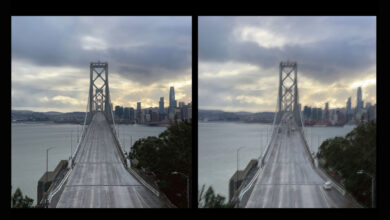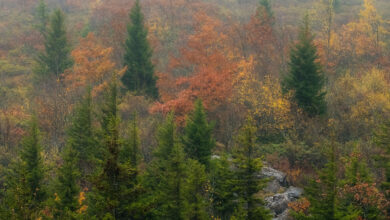I Wish I Knew Sooner: The Importance of Light

Light is the foundation of photography. Without light, there is no image, and in landscape photography, the quality, direction, and intensity of light can make or break a photograph. As a landscape photographer, understanding how light works is key to capturing the beauty and drama of nature. Over time, I have come to realize that mastering light is one of the most important skills a landscape photographer can hone. Looking back, there are insights about light that I wish I had known earlier—knowledge that would have greatly improved the quality of my early work.
The Importance of Light in Landscape Photography
Lighting determines the mood, texture, and depth of a landscape, transforming ordinary scenes into something special. The interaction of light with landscape elements—illuminating some areas while casting shadows on others—creates contrast and depth that makes an image compelling.
In my early days of photography, I was often disappointed with my photos, even in beautiful locations. The problem wasn’t the landscape; it was that I didn’t understand how to use light. It took a lot of practice and a lot of missed opportunities to realize that light is the most important element in landscape photography.
Golden Hour
The golden hour, which occurs just after sunrise and before sunset, is a magical time for landscape photography. During these hours, the sun is low in the sky, casting a warm, soft light that bathes the landscape in a golden hue. The long shadows cast during golden hour add depth and texture, making the scene appear more three-dimensional.
At first, I shot all day, thinking that the bright midday sun would produce the best images. However, I quickly realized that harsh midday light often produced flat, uninspiring images with deep shadows and blown highlights. It wasn’t until I started waking up early and staying up late to shoot during the golden hour that my photos began to take on a more professional quality. The warm tones and soft shadows of the golden hour bring out the best in a landscape, creating a mood and atmosphere that is difficult to replicate at other times of the day.
Blue Hour
Blue hour is the twilight period just before sunrise and after sunset when the sun is below the horizon, but the sky is still illuminated. The light during blue hour is soft and diffuse, with blue tones creating a calm, serene mood in images.
Early in my career, I would pack up my gear as soon as the sun dipped below the horizon, missing out on the opportunity to photograph during the blue hour. It wasn’t until I started experimenting with longer exposures during this time that I discovered the beauty of the blue hour. The cool tones of the blue hour contrast beautifully with the warm tones of artificial light, making it a great time to photograph cityscapes and coastal scenes.
Direction of light
The direction of light hitting your subject has a profound effect on the final image. Understanding front light, side light, and back light helps you position yourself relative to your light source and subject.
- Front Light: When light comes from behind you and shines directly on your subject, it is called front light. Front light can bring out color and detail but often creates a flat image with little depth or texture. I find front light works best when emphasizing color and definition without much concern for shadows and depth.
- Side Lighting: Side lighting occurs when light comes from the side of your subject. This type of lighting is ideal for creating depth, texture, and contrast. The shadows cast by side lighting add depth, highlighting the contours and shapes of the terrain. Side lighting is especially effective in mountainous or hilly areas, where the interplay of light and shadow on peaks and valleys creates a dramatic and eye-catching image.
- Backlighting: Backlighting occurs when the light source is behind your subject, shining toward the camera. Backlighting can be tricky, often resulting in harsh shadows and blown highlights. However, when used correctly, backlighting can create stunning effects, such as sunbursts, rim lighting, and soft shadows. I’ve learned to use backlighting to create mood or atmosphere, such as shooting into the sun during golden hour for a warm, ethereal effect.
 The role of weather in lighting
The role of weather in lighting
Weather conditions significantly affect the quality and characteristics of light in landscape photography. Different weather conditions create different types of light, each with its own characteristics and challenges.
- Clear Skies: On cloudless days, the light is bright and direct, with little diffusion. While this can create vibrant, high-contrast images, it can also result in harsh shadows and blown highlights. Clear skies are best for shooting during golden hour when the low angle of the sun softens the light and reduces contrast.
- Overcast Skies: Overcast skies act as natural diffusers, softening the light and reducing contrast. While some photographers avoid shooting on cloudy days, I appreciate the soft, even light that overcast conditions provide. This light is great for capturing detail and texture without harsh shadows and harsh highlights. Overcast skies also create a more moody atmosphere, which is perfect for certain landscapes.
- Stormy Weather: Stormy weather can produce some of the most dramatic lighting in landscape photography. The contrast between dark storm clouds and the sunlight shining through can create a powerful image. Photographing in stormy weather requires patience and courage, but the rewards are often worth the effort.
- Fog and Mist: Fog and mist can transform a landscape into a mystical, supernatural sight. The diffused light in foggy conditions creates a soft, ethereal atmosphere, with limited visibility creating a sense of depth and mystery. I have learned to embrace foggy mornings, especially in the woods and along the coast, where the fog can bring a sense of stillness and peace to the scene.
 The role of post-processing in enhancing light
The role of post-processing in enhancing light
Post-processing plays an important role in enhancing the lighting in your images. While capturing the best possible light in-camera is essential, post-processing allows you to fine-tune and enhance the lighting to create the desired mood and atmosphere.
- Adjusting exposure: Adjusting exposure can help bring out details in the highlights and shadows, ensuring a balanced and even distribution of light across the entire image. Slight exposure adjustments can have a significant impact on the overall mood of the image.
- Blur and Burn: Blur (lighten) and burn (darken) are powerful techniques for selectively adjusting the lighting in your images. These techniques can draw attention to specific areas, enhance contrast, and add depth.
- Adjust white balance: Adjusting white balance can significantly affect the color and mood of an image. A warmer white balance can enhance the yellow tones of a sunrise or sunset, while a cooler white balance can accentuate the blue tones of the blue hour.
- Enhance Highlights and Shadows: Enhance highlights and shadows can add depth and contrast, making light more vivid and three-dimensional.
 What I Wish I Knew Sooner
What I Wish I Knew Sooner
As I reflect on my landscape photography journey, I’ve found there are a few key lessons about light that I find invaluable to know from the start:
- The Power of Golden Hour: I used to think any time of day was good for landscape photography. Understanding the importance of golden hour light has transformed the quality of my images.
- The Potential of Blue Hour: I often overlooked blue hour, packing up too early. Discovering the potential of blue hour light opened up new possibilities.
- The Impact of Weather on Lighting: I used to avoid shooting in cloudy or stormy weather, thinking it would result in dull images. Now I understand that different weather conditions present unique lighting opportunities.
- The Role of Post-Processing: Previously, I underestimated the importance of post-processing in enhancing light.
 Conclusion
Conclusion
Mastering light is the key to creating dramatic and compelling landscape photographs. Whether working with the warm light of the golden hour, the diffuse light of an overcast day, or the dramatic light of a stormy sky, the quality and direction of light will bring your images to life. By learning to see and use light effectively, you can transform ordinary scenes into extraordinary, compelling, and inspiring images. Like any skill, mastering light takes time, practice, and experimentation, but the rewards are well worth the effort.
How has understanding light influenced your photography? Why not share some stories or images below?





